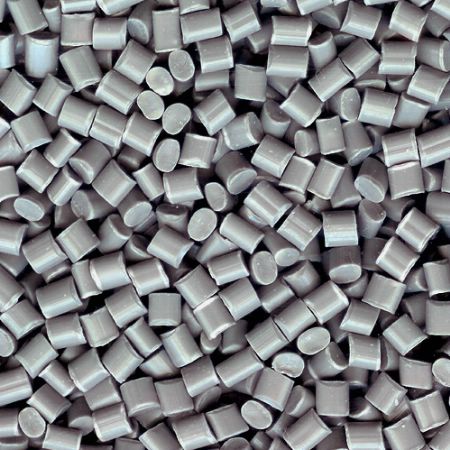ABS is a thermoplastic resin commonly used for injection molding applications. ABS (Acrylonitrile Butadiene Styrene) General Purpose with an izod impact rating of 4, available in black.
ABS Plastic is a copolymer of Acrylonitrile, Butadiene, and Styrene, and generally possess medium strength and performance at medium cost. ABS is a common thermoplastic resin and can often meet the property requirements at a reasonable price, falling between standard resins (PVC, polyethylene, polystyrene, etc.) and engineering resins (acrylic, nylon, acetal, etc.). ABS is considered the best of the styrenic family. It is tough, hard and rigid and has good chemical resistance and dimensional stability.
ABS is derived from acrylonitrile, butadiene, and styrene. Acrylonitrile is a synthetic monomer produced from propylene and ammonia; butadiene is a petroleum hydrocarbon obtained from butane; and styrene monomers, derived from coal, are commercially obtained from benzene and ethylene from coal. The advantage of ABS is that this material combines the strength and rigidity of the acrylonitrile and styrene polymers with the toughness of the polybutadiene rubber. The most amazing mechanical properties of ABS are resistance and toughness. A variety of modifications can be made to improve impact resistance, toughness, and heat resistance. The impact resistance can be amplified by increasing the proportions of polybutadiene in relation to styrene and acrylonitrile although this causes changes in other properties. Impact resistance does not fall off rapidly at lower temperatures. Stability under load is excellent with limited loads.
Even though ABS plastics are used largely for mechanical purposes, they also have good electrical properties that are fairly constant over a wide range of frequencies. These properties are little affected by temperature and atmospheric humidity in the acceptable operating range of temperatures. The final properties will be influenced to some extent by the conditions under which the material is processed to the final product; for example, molding at a high temperature improves the gloss and heat resistance of the product whereas the highest impact resistance and strength are obtained by molding at low temperature.
FEATURES
- Medium strength
- Tough, hard and rigid
- Good chemical resistance
- Dimensional stability
- Creep resistant
- Electroplatable
- Outstanding formability
- Very high impact strength
- High tensile strength and stiffness
- Excellent high and low temperature performance
- Resistant to many plasticizers
- Excellent ductility
LIMITATIONS
- Poor weatherability
- Poor solvent resistance
- High smoke generation when burned
APPLICATIONS
ABS can be used to make light, rigid, molded products such as piping, musical instruments (most notably recorders and plastic clarinets), golf club heads (used for its good shock absorbance), automotive body parts, wheel covers, enclosures, protective head gear, vballs [reusable paintballs], and toys including LEGO bricks.
Product Weight:
1500 lb
Shipping Weight:
Size:
45x48x45
Free Shipping Avail?
Yes



